|
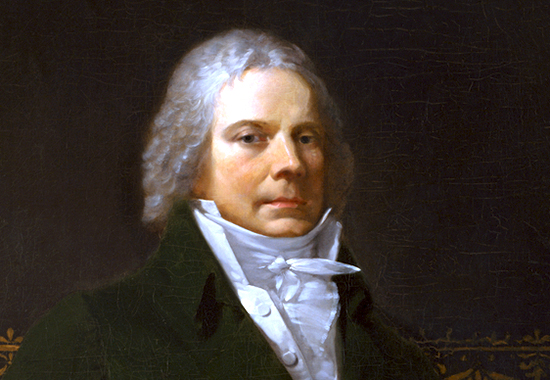
Charles-Maurice de Talleyrand
1754-1838
One of the sturdiest hides in the
history of French
politics, Talleyrand exerted major influence over official European business from 1789 until 1834.
|
|
Image Above
Charles-Maurice de
Talleyrand-Périgord
Detail of the
painting by Pierre-Paul Prud'hon
Metropolitan
Museum of Art |
This was a remarkably long time period stretching all the way from the
 French Revolution
to the reign of the
French Revolution
to the reign of the
 Citizen King Louis-Philippe — an era of extreme political changes.
Citizen King Louis-Philippe — an era of extreme political changes.
In other words, Talleyrand managed to
stay in the saddle before, during, and after
 Napoleon I.
Not many men were able to accomplish the same. Napoleon I.
Not many men were able to accomplish the same.
Charles-Maurice de
Talleyrand — Personality
Talleyrand had a sharp brain and wit. Although Talleyrand was said to have
been able to appreciate the smart and beautiful things around him,
he never lost sight of his aims.
Charles-Maurice de
Talleyrand — Name, Family, and Roots
His full name was
Charles-Maurice de Talleyrand-Périgord,
and he was the Prince de Bénévent.
|
About the
Talleyrands |
| |
|
| |
Charles-Maurice de Talleyrand's family had aristocratic
roots but lacked its befitting wealth. However, the Talleyrands were
very proud of their family tree.
Older spellings of the name
Talleyrand are Taleyrand, Taleyran, Talieran, or
Tailleran.
The name Talleyrand is of unknown origin and goes back to the 12th
century. Some think it stems from a
feudal tenure, others think it started as a nickname for soldiers (taille
rangs = mow down the ranks) and eventually developed into a
surname.
Here is the coat of arms of the
Talleyrand-Périgords at their tomb at the cemetery of Auteuil —
three rampant lions with crowns:
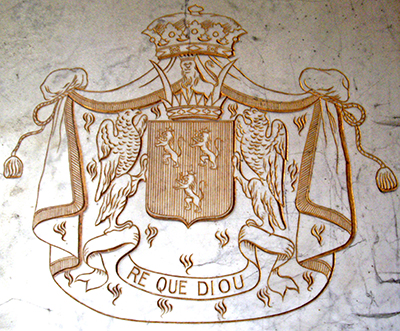
Talleyrand Coat of
Arms
Photo Mu/Wiki
Re Que Diou = Rien Que Dieu, or Nothing but God,
in other words Only God Above Us, a motto that reflects the
proud mindset of the Talleyrands, especially in light of the fact
that France was governed by an absolute monarch until 1792.
Talleyrand's paternal grandfather,
Daniel-Marie-Anne, Marquis de Talleyrand-Périgord, Comte
(count)
de Grignols, was killed at the
 Siege of Tournai. Siege of Tournai.
Charles' father was Charles-Daniel, Comte
(count)
de
Talleyrand-Périgord, who lived from June 16, 1734 -
November 4, 1788, and made it to lieutenant general in the royal
army.
Charles' mother was
Alexandrine-Marie-Victoire-Eléonore de Damas d'Antigny,
daughter of Joseph-François,
Marquis d'Antigny, who died June 14, 1809.
The two married on January 12, 1751.
Charles-Daniel was 16, Alexandrine was 22 years old at the time.
They had four sons.
Their fist son was Alexandre-François-Jacques, born
on January 18, 1752. Alex died at
five years of age.
Their second son was Charles-Maurice.
Their third son was
Archambauld-Joseph, born
in 1762. Following his father's example, Archie became lieutenant
general as well.
Their fourth son was
Boson-Jacques, also lieutenant
general, and later governor of Saint-Germain-en-Laye.
Charles married
Catherine Noël Grand, nee Worlée. Born November 21,
1762.
In 1815, they separated.
Talleyrand had no legitimate children. |
| |
|
| |
|
|
About the
Périgords |
| |
|
| |
Périgord
is a region in southern France, located between the
cities Bordeaux
and Limoges. Way
back when, the
Petrocorii, or
Petragorici, a
Gallic tribe, dominated the area with headquarters at
today's Perigueux. Then the Romans took over, followed
by the
 Visigoths, after
which the
Visigoths, after
which the
 Merovingian kings
moved in.
Merovingian kings
moved in.
Guillaume de Périgord,
is the first on record with the added surname Talleyrand
(or Talairan.) In 1115, Guillaume became the Count of
Perigord.
Here is the County of Périgord circled on a map showing
France in 1328, just before the outbreak of the
 Hundred Years' War.
Hundred Years' War.
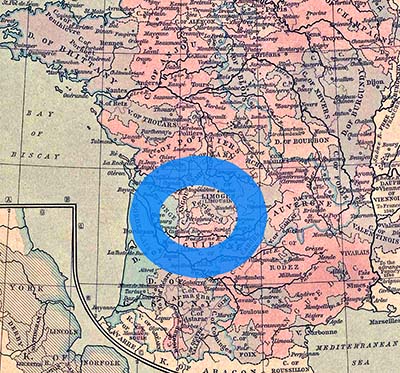
Map
Location of Périgord, France 1328
Click map to enlarge.
Some of the Talleyrands
made it to Seigneur (Lord) de Grignols and Seigneur de
Chalais.
For more details on
this family tree see also
 Comtes
de La Marche & de Périgord. Comtes
de La Marche & de Périgord. |
| |
|
| |
|
|
About
Bénévent |
| |
|
| |
Bénévent
is the French name for the Italian city Benevento in
southern Italy. Here is Benevento on a map, see red
marker:
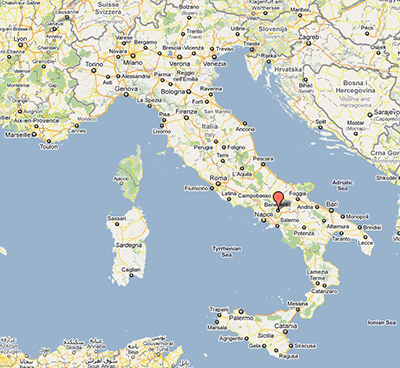
Map Location
of Bénévent, or Benevento, in Italy
Google Map
What
connections did Talleyrand have with Benevento?
In 1806,
Napoleon called Benevento part of his realm, established
a principality, and gave it to Talleyrand. We read,
"Wishing to testify to our Grand Chamberlain and
Minister for Foreign Affairs, Talleyrand, our
gratitude for the services he has rendered to our
crown, we have resolved to transfer to him, as in
fact we do transfer to him by these presents, the
principality of Benevento, with the title of Prince
and Duke of Benevento, to hold and fully to possess
the same in full property and sovereignty as the
immediate fief of our crown."
Given
at our palace of St. Cloud,
5th of June, 1806
Napoleon
Formerly ruled by the Papacy,
Pope Pius VII complained, of course. Here is
Benevento's political situation on a map before it was
annexed by Napoleon.
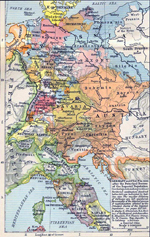
1803
Germany and Italy
While Benevento was under Napoleon and Talleyrand, the
map looked like this:
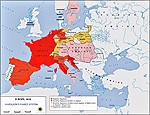
1810 Europe:
Napoleon's Power
In 1815,
after the
 Congress of Vienna,
Benevento was returned to the Church. However, the Pope
could enjoy Benevento only until 1860, when its citizens
voted to become part of a united Italy. But that was
long after Talleyrand's death.
Congress of Vienna,
Benevento was returned to the Church. However, the Pope
could enjoy Benevento only until 1860, when its citizens
voted to become part of a united Italy. But that was
long after Talleyrand's death.
Here is a
map of Italy after the Final Act of the Congress of
Vienna in 1815:
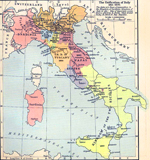
1815-1870
Italy
Thus,
Talleyrand carried his title Prince de Bénévent,
or Prince of Benevento, only from 1806 - 1815. |
Charles-Maurice de
Talleyrand — Short Biography and Timeline
|
Talleyrand
Under the Monarchy of King Louis XV
(1715-1774) |
|
|
|
|
February 2, 1754 |
Birth
at 4, rue Garancière, Paris, France
Talleyrand was club-footed, his right
foot was noticeably shorter than the
other, a
deformation that he might or might
not have had from birth. Some say he had fallen when mounting a
chest of drawers. Others say a servant
of the house let him drop. Talleyrand's cousin said he had been
born lame.
In
any event, this handicap put a
military career out of the question
and he will go for a clerical
profession. |
|
|
|
|
1758 -
1760 |
Stays
at his great-grandmother's at the
Chalais Castle at Perigord. |
|
|
|
|
1762 |
Collège d'Harcourt, Paris |
|
|
|
|
1769 |
Goes
to Reims (or Rheims) where his uncle
Alexandre
Angélique de Talleyrand-Périgord
takes him under his wings.
Uncle
Alexandre is employed as assistant
to the archbishop of
Reims,
Charles Antoine de La Roche-Aymon,
and wee Talleyrand gets employed to
assist his uncle.
Reims was a pretty prestigious
address. It was here where Joan of
Arc witnessed the coronation of
Charles VII in 1429.
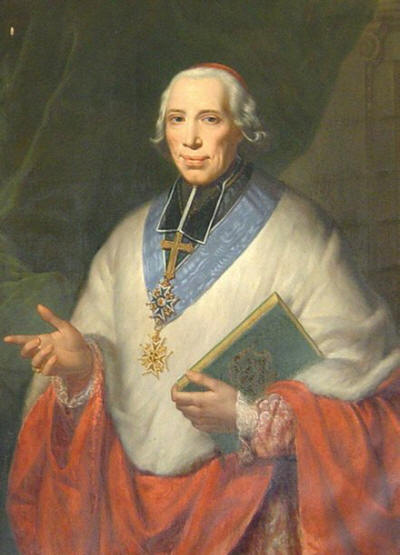
Alexandre Angélique de Talleyrand-Périgord
(1736-1821)
L'Église
Catholique à Paris
|
|
|
|
|
May
16, 1770 |
Marie
Antoinette and Louis-Auguste are
married at Versailles. |
|
|
|
|
1770 |
Enters
the seminary of Saint-Sulpice at Paris,
a college for priesthood training.
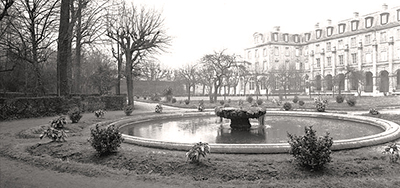
Seminary of Saint-Sulpice, Paris
Former
home of the always refreshing
Margaret of Valois
Ministère de la Culture |
|
|
|
|
|
|
|
|
|
|
Talleyrand
Under the Monarchy of
 King Louis XVI
(1774-1792)
King Louis XVI
(1774-1792) |
|
|
|
|
1775 |
Expelled from Saint-Sulpice because
of his affair with
Dorothée
Dorinville, in local
theaters also known as Lucy.
Studies at the Sorbonne. |
|
|
|
|
April
1775 |
Receives minor orders |
|
|
|
|
June
11, 1775 |
Louis-Auguste is crowned King Louis
XVI at the cathedral in Reims. |
|
|
|
|
October 1775 |
The king nominates him abbot of
Saint-Denis at Reims |
|
|
|
|
1777 |
Uncle Alexandre becomes archbishop
of Reims. |
|
|
|
|
March
1778 |
Receives his degree in theology
from the Sorbonne |
|
|
|
|
December 1779 |
Ordained (admitted to the ministry
of the Christian Church). The very
next day uncle Alexandre makes him
vicar general.
The
Catholic Encyclopedia explains
"vicar general" as follows:
The highest official of a
diocese after the ordinary. He
is a cleric legitimately deputed
to exercise generally the
Episcopal jurisdiction in the
name of the bishop, so that his
acts are reputed the acts of the
bishop himself.
|
|
|
|
|
1780 |
Appointed general agent of the
clergy of France. He will hold this
important office for eight years.
The
general agent represented the French
church in its dealings
with the French government. |
|
|
|
|
November 1788 |
Appointed bishop of Autun. |
|
|
|
|
March
15, 1789 |
Starts
his job as Bishop of Autun.
Here is Autun on a map:
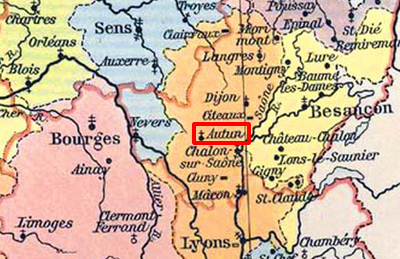
Map Location
Autun - Ecclesiastical France
1789/1802
Click to
enlarge.
|
|
|
|
|
May 5,
1789 |
États-généraux = Estates-General at
Versailles = the
representative assembly
of the three estates: the Clergy,
the Nobles, and the Third Estate
(the commoners), which
represented the majority of the
people.
The assembly had not
met in France since 1614.
Talleyrand
was elected deputy for the clergy. |
|
|
|
|
November 2, 1789 |
Nationalization, as recommended by
Talleyrand, was voted. |
|
|
|
|
July
12, 1790 |
Talleyrand succeeds in having the
Constitution Civile du Clergé
(Civil Constitution of the
Clergy) adopted, which, without
papal approval, completely
reorganized the
French church.
The
Pope fires Talleyrand from Church. |
|
|
|
|
January 1791 |
Elected administrator of the département of Paris |
|
|
|
|
January 1792 |
Arrives in London as diplomat with
the assignment to convince the
British to remain
neutral. |
|
|
|
|
April
20, 1792 |
France
declares war on Austria |
|
|
|
|
April
29, 1792 |
Talleyrand and Chauvelin arrive at
London. |
|
|
|
|
May
25, 1792 |
British government issues a declaration of
neutrality |
|
|
|
|
June
20, 1792 |
Storming of the Tuileries palace |
|
|
|
|
July
5, 1792 |
Talleyrand leaves London |
|
|
|
|
August
10, 1792 |
Overthrow of the monarchy |
|
|
|
|
Talleyrand in the First Republic -
The National
Convention (1792-1795) |
|
|
|
|
September 1792 |
Massacre of royalist prisoners.
Leaves
Paris direction London as private
citizen. |
|
|
|
|
September 18, 1792 |
Arrives in London |
|
|
|
|
January 1793 |
Execution of Louis XVI |
|
|
|
|
January 1794 |
Expelled from London |
|
|
|
|
March 1794 |
Travels to the
United States, remains there for two years. |
|
|
|
|
July
1794 |
Maximilien
Robespierre's downfall |
|
|
|
|
|
|
|
Talleyrand in the First Republic -
The Directory
(1795-1799) |
|
|
|
|
September 1796 |
Back
in Paris |
|
|
|
|
July
1797 |
Foreign
minister |
|
|
|
|
October 1797 |
 Treaty of Campo Formio
Treaty of Campo Formio |
|
|
|
|
1797-1800 |
The
 XYZ Affair
/ The
XYZ Affair
/ The
 Quasi War
Quasi War |
|
|
|
|
1799 |
Talleyrand resigns |
|
|
|
|
|
|
|
Talleyrand in the First Republic -
The Consulate
/ Napoleon (1799-1804) |
|
|
|
|
Nov.
9–10, 1799 |
Napoleon's coup d'état makes him top
dog |
|
|
|
|
November 22, 1799 |
Talleyrand again foreign minister |
|
|
|
|
July
1801 |
 Concordat
of 1801 between Napoleon and
Pope Pius VII, which
reestablished religious peace.
Concordat
of 1801 between Napoleon and
Pope Pius VII, which
reestablished religious peace. |
|
|
|
|
1802 |
Napoleon
now consul for life |
|
|
|
|
May
1803 |
Renewal of war between France and
England |
|
|
|
|
|
|
|
Talleyrand under the First Empire of
Napoleon I
Bonaparte (1804-1814 / 1815) |
|
|
|
|
May
18, 1804 |
Napoleon now Emperor. Talleyrand now
Grand Chamberlain. |
|
|
|
|
August
1807 |
Talleyrand resigns, Napoleon
accepts. |
|
|
|
|
September 1808 |
Accompanies Napoleon to a congress
of European sovereigns at Erfurt,
Prussia |
|
|
|
|
|
|
|
Talleyrand
Under the Monarchy of
 King Louis
XVIII (1814-1824)
King Louis
XVIII (1814-1824) |
|
|
|
|
March
31, 1814 |
Allies enter Paris |
|
|
|
|
May
13, 1814 |
Louis
XVIII appoints Talleyrand foreign
minister |
|
|
|
|
1814–15 |
Talleyrand is France's representative at the
Congress of Vienna |
|
|
|
March
20, 1815
- July 8, 1815 |
 Hundred Days.
Hundred Days.
Talleyrand in Vienna during the Hundred Days. |
|
|
|
|
July
1815 |
Second
Restoration of Louis XVIII |
|
|
|
|
? |
Talleyrand forced to resign |
|
|
|
|
|
|
|
Talleyrand
Under the Monarchy of King Charles X
(1814-1824) |
|
|
|
|
1817 |
Uncle
Alexandre becomes Archbishop of
Paris and cardinal. |
|
|
|
|
? -
1829 |
Retirement, writes his memoirs.
Then becomes active again to remove
Charles X and to get Louis-Philippe
established. |
|
|
|
|
|
|
|
Talleyrand
Under the Monarchy of King
Louis-Philippe (1830-1848) |
|
|
|
|
1830 -
1834 |
Louis-Philippe July Monarchy
Talleyrand Ambassador to London |
|
|
|
|
April
22, 1834 |
Quadruple Alliance regarding the
thrones of Spain
and Portugal |
|
|
|
|
May
17, 1838 |
Death
at Paris, France |
See also  Governments of France
Governments of France
More History
|
|